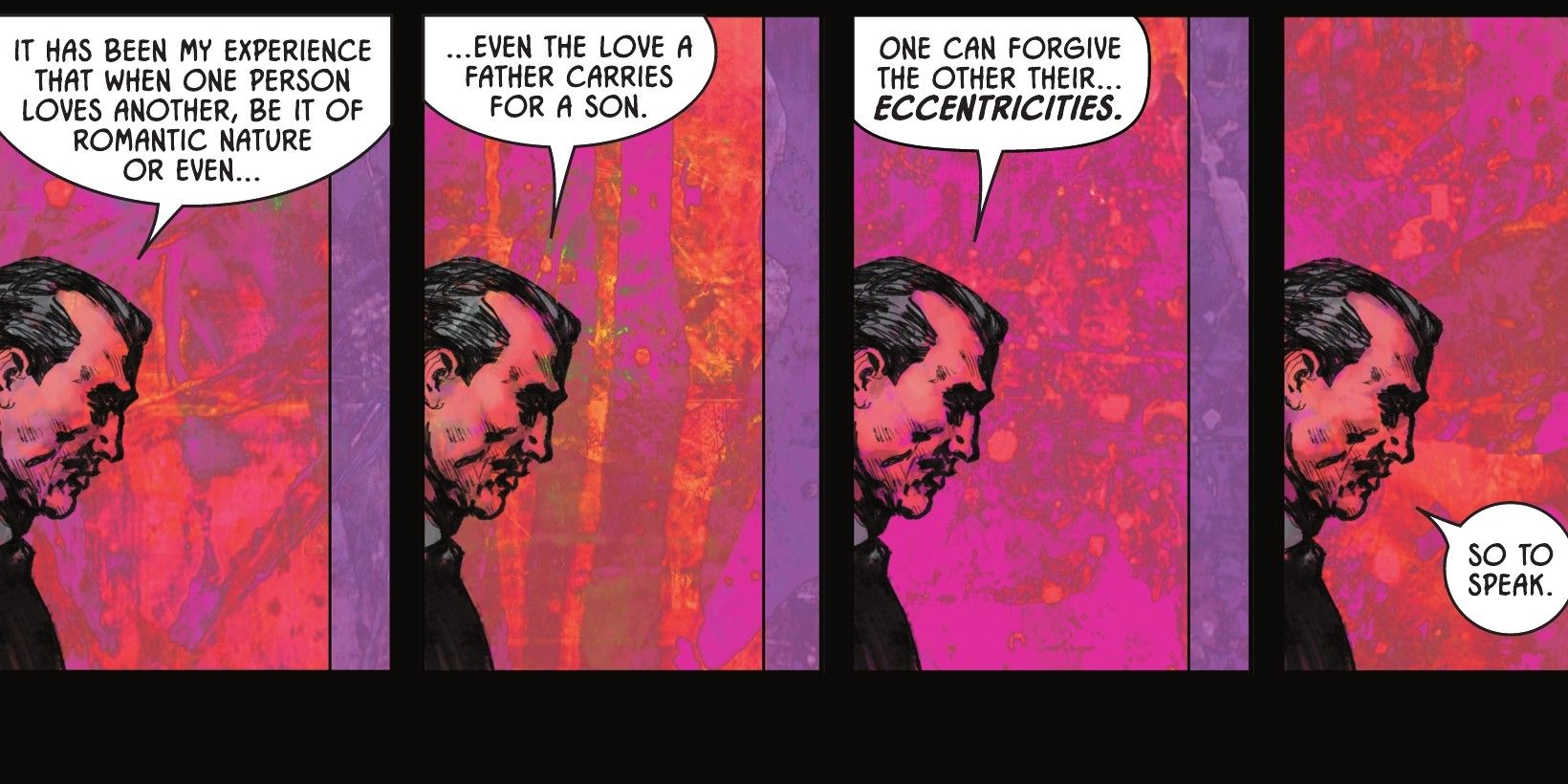Warning: This article contains spoilers for Batman/Catwoman #12
The secret to any good relationship is knowing there is a give and a take, and, in the Black Label series Batman/Catwoman writer Tom King demonstrates the pitfalls of this adage when placed in the realm of superhero crime-fighting. It’s rare to find a nuanced discussion of lifelong romance in the comics medium, and Batman/Catwoman has drawn controversy at times for its placement of sexuality front and center. However, the end result, following 12 issues (and a heart-wrenching Christmas special), reveals the ultimate message of this preoccupation: that perhaps Batman’s most human character traits come from his star-crossed tryst with Catwoman. And this is why romance will always be dead in superhero comics.
Batman/Catwoman is notable for its use of non-linear storytelling in its holistic unfolding of the relationship between the dashing Bruce Wayne and the lithesome Selina Kyle. Taking place across three separate timelines, essentially a younger, middle and older version, the narrative sees the often-relegated Catwoman take center-stage as a neurotic, if not morally conflicted villain-turned hero who finds her true love in the form of her greatest adversary, Batman. King (skillfully aided by artists Clay Mann, Tom Morey and Liam Sharpe) takes pains to portray the couple’s liaison in a starkly realistic light despite the often-cartoonish backdrop, with perhaps the greatest tension arising from Catwoman’s constant need to keep information sensitive to her criminal activities hidden from her future husband. This includes information that could potentially save lives, such as the whereabouts of her sometime ally, The Joker.
In the full summation of this fractured epic, King reveals the ace up his sleeve: that, despite Catwoman’s questionable fidelity to justice, Batman’s devotion to her is a testament to the duality within his own moral code, demonstrated in his acceptance that interpersonal relationships are about compromise. Any relationship, especially a romantic partnership, is going to involve accepting another person for who they are, regardless of their undesirable personality traits or behaviors one may find odious. Batman/Catwoman takes this concept, clear at the core of any healthy relationship, and magnifies it, depicting an initially calloused Selina being gradually wooed by the staunchly dutiful Bruce, as she learns to accentuate her more noble qualities while he comes to terms with the limits of how much he can change her. Though tumultuous, this compromise sees them through the birth of their daughter Helena, and finally to Bruce’s death from natural causes.

Superheroes are based upon individuals with a sense of justice, and Bruce’s decades-long romance with Catwoman has often proved a difficult balance to strike in Batman’s otherwise purely heroic quest to protect Gotham. King does not equivocate in the bizarreness of this contradiction, highlighting scenes where Selina drunkenly plots a heist with an alley cat and at one point nearly destroys Bruce by leaving him naked in a bank vault in an attempt to frame him for robbery. At the end, placing their actual nuptials at a Vegas-style “Batrimony” wedding (complete with an Adam West-style Batman actor presiding), King seems to be pointing to a certain honest corniness in their romance, beset though it is with supervillain drama and rooftop chases, that provides a spark of genuine love to the fictional couple, despite clearly requiring Bruce’s willful blindness to Selina’s criminal behavior.
While this dichotomous duo may seem a hearteningly realistic addition to the mythos of DC Comics’ superhero stable, what King ultimately says is that this kind of relationship is not one which really fits in the squeaky-clean mainstream market. Such a pairing leaves too much moral ambiguity, demonstrates King, as it would force Batman, one of DC’s great stalwarts, to ultimately compromise on his own moral code in bringing justice to Gotham’s streets. Batman/Catwoman shows that, if a hero really fell in love with a villain, the likely result would be the hero’s ultimate culpability in their partner’s crimes.
Batman/Catwoman #12 is available now from DC Comics.




